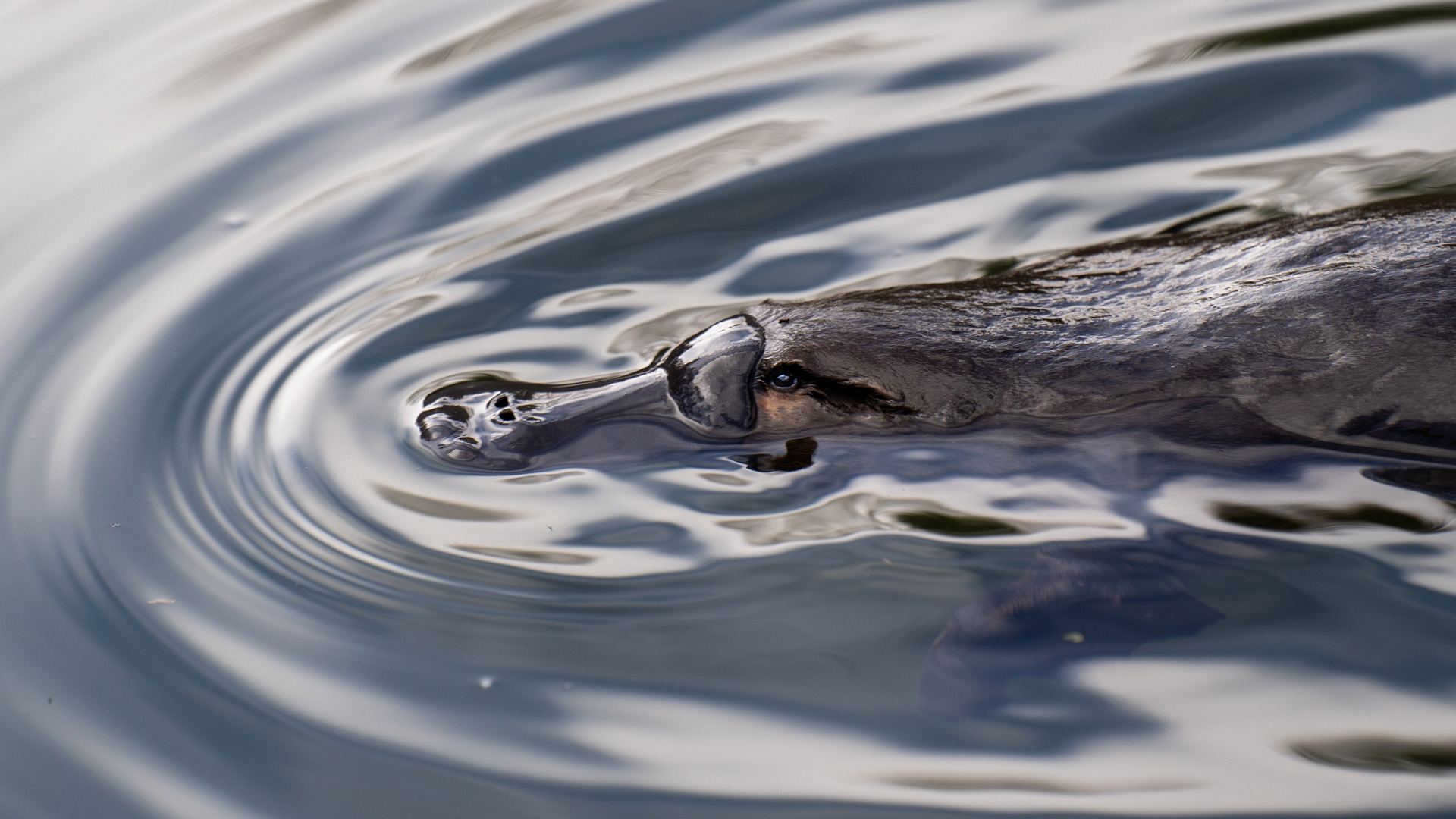Platypus populations are under increasing threat across Australia. © Pete Walsh
Australia’s most iconic species, the egg-laying, duck-billed, flat-tailed platypus, is disappearing before our eyes. According to a recent study, urbanisation and climate change are the biggest threats to platypuses across Australia. The Hobart Rivulet Platypus community organization is dedicated to the conservation and protection of platypuses living in the Hobart Rivulet in Tasmania. It aims to minimise threats to platypuses living in this urban environment and we chatted to organisation founder Pete Walsh to find out more.
WildArk: How did you get started on your mission to protect platypuses?
Early in 2020, I noticed that the usually elusive Hobart Rivulet platypus had become a lot more comfortable foraging in exposed sections of the Hobart Rivulet. Unfortunately, this waterway was increasingly littered with trash. One day I came across a small platypus struggling to break free from a web of plastic netting on the rivulet bank. With some gentle assistance, I was able to free her.
I later named this platypus Zoom as I would see her frequently zooming around her feeding pod. I began reading about threats to platypuses particularly in urban environments and wanted to do more. This experience inspired me to create the Hobart River Platypus Community Organisation.



(Left) Zoom with plastic stuck around her bill. (Centre) Rubbish collected along the Hobart Rivulet. (Right) Zoom pops her head up. All photos: © Pete Walsh
Why is it so important to conserve and protect platypuses?
The platypus is the canary in the cage. If we can’t save this iconic species, what hope does the rest of our natural world have? What hope do we have? Conserving and protecting the platypus means preserving and protecting our waterways because healthy waterways are critical to our survival.
WildArk: Scientists warned of platypus population decline in the 1980s. What are the biggest threats facing the Hobart Rivulet platypus and platypuses across Australia?
Habitat loss, degradation, and introduced species are threatening platypuses right across Australia. Climate Change is another killer as extreme drought and flood events pose a threat to platypuses through reduced water availability, viable habitat, and population fragmentation.
Mucormycosis is a fungal disease that only affects Tasmanian platypuses; however, little is known about this disease. I’d suggest anyone interested in learning more about the threats to platypus visit https://platypus.asn.au/.
WildArk: Do we know the population size of the Hobart Rivulet platypuses?
We don’t have an exact figure. Still, it’s more than the singular ‘Hobart Rivulet platypus’ that has long been a part of Hobartian folklore. I monitor four platypuses in the Hobart Rivulet, but I suspect there are at least several more.
WildArk: Platypuses are fascinating and elusive creatures. How would a platypus-monitoring program help to conserve this species?
Without widespread, ongoing monitoring of platypus populations, we have no idea how they are faring. As stated in the Tasmanian Government Platypus Management Plan in 2010:
The lack of evidence for significant reductions in the abundance or distribution of platypuses across Tasmania since European settlement probably reflects an absence of catastrophic population declines. However, this conclusion should be treated cautiously, given the insensitivity of existing measures to detect change.

A platypus bill is a wonder of nature, its electroreceptors work together to create a 3D wireframe view of the world based on the presence of micro-electric currents that allow the platypus to locate prey in total darkness. : © Pete Walsh
WildArk: The platypus is an Australian flagship species. Can you tell us about some of its unique adaptations?
Platypuses have special adaptions to their environment. They can maintain a constant body temperature when swimming in freezing water, even for long periods. A platypus’s bill is a wonder of nature. It allows the animal to forage at high speed underwater with its eyes and ears closed. It does this by creating a 3D wireframe view of the world based on micro-electric currents that allow the platypus to locate prey in total darkness.
WildArk: Recently, there has been a surge in national momentum to list platypus as a ‘threatened’ species. How would this help its survival?
Doing so would compel government bodies to take specific actions to protect and conserve platypuses as they do for other threatened species. Incredibly this is currently lacking.
WildArk: Law protects platypus burrows; do you think this is being enforced?
In Tasmania, platypus burrows are protected under the Nature Conservation Act 2002. It’s a challenge to enforce, as burrows by design are difficult to identify. Therefore, the assumption should always be that there is a burrow present, requiring appropriate planning and on the job processes to be in place. Local communities can help protect burrows by reporting any concerns related to public or private works in waterways to relevant authorities. In Tasmania, that is DPIPWE (https://dpipwe.tas.gov.au/wildlife-management/management-of-wildlife/reporting-wildlife-offences)

Zoom pops her head up to say hello, in the Hobart Rivulet. © Pete Walsh
Can you tell us about any campaigns you are currently lobbying around the platypus, pollution, and the need to restore our waterways?
There is a lot of work to be done! We are currently running several campaigns under the Reconnect, Restore, Rewild banner.
Reconnect aims to connect community and government through social media. We aim to make people more aware of the constant threats facing platypuses living in urban environments. One of the ways we are doing this is by encouraging Hobart residents to ‘Adopt a Platypus’ by joining the Australian Platypus Monitoring Network. We’ve created monitoring sites in conjunction with the Hobart City Council to simplify this process and make the data more meaningful when correlated with water quality testing.
Restore focuses on critical changes that require local government involvement. We are working directly with the City of Hobart to improve the protection of platypus burrows, lobbying for a far more sympathetic water level management, and minimizing pollution entering the rivulet through the city stormwater system.
The Rewild, if we get the first two bits right, the natural world will look after the rewilding part.




